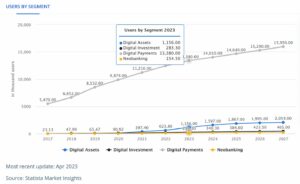
In the financial sector, a significant number of employees work in the Customer Support (Customer Care) department. However, blogs about the financial (Fintech) sector often overlook this department, focusing instead on sales and IT.
Instead Customer Support departments are often considered as necessary costs (a cost center) that should be minimized as much as possible.
This results in continuous neglect and relentless cost-cutting measures in those departments. E.g.
-
Outsourcing to near- and off-shore countries
-
Structural understaffing, leading to awfully long waiting times for customers.
-
Low salaries, resulting in hiring profiles with little experience and expertise.
-
Bad and difficult working circumstances, like
-
Setting targets on Average Call Time, creating pressure to quickly close calls.
-
Leaderboards based on the number of calls processed, fostering competition among team members.
-
Monitoring and limiting break times
-
Encouraging multitasking during no-call time (for other occupations, like answering mails, social media, chat boxes…), which requires continuous context switching and reduced focus.
-
-
Complex IVR menus that aim to automate and streamline processes, but often lead to a poor customer experience.
-
Maximizing automation through standard templates (to reply to mails and phone calls), the setup of chatbots, forcing customers to use self-service options…
These measures ultimately contribute to a bad customer experience, leading to customer churn, negative social media feedback…
Considering the growing importance of customer centricity, this situation is probably not sustainable, as in the long-term it leads to bad business results. Clearly delivering exceptional customer service has become a key competitive differentiator, and therefore shifting the paradigm is crucial.
In a customer-centric organization, the Customer Support department should emerge as a cornerstone in serving and delighting customers. Increasingly financial service players are therefore recognizing the value of Customer Support teams as profit-centers, that positively impact customer satisfaction and brand loyalty.
In this trend, we see the opposite movement of the measures taken above, i.e.
-
Re-insource Customer Support departments, considering them as a core, strategic competence/function for the company.
-
Increase headcount (i.e. foresee sufficient staff) to reduce waiting times (ensuring swift issue resolution), increase the time spent on every customer interaction (focus on satisfaction of the customer in the customer support interaction, rather than a quick completion) and to improve work conditions.
-
Hire better profiles and provide sufficient training and support.
-
Prioritize direct customer interactions over indirect or automated interactions. E.g. certain companies have already adopted a policy of answering every question via a phone call and not by a written reply. By adopting this practice, they have significantly increased customer satisfaction, but were also able to identify countless new cross-selling opportunities.
-
Grant more responsibilities and autonomy to Customer Support resources, allowing them to cross-sell products, identify potential customer issues (i.e. identify churn), survey and understand customers, and proactively contact customers.
-
Recognize Customer Support teams as ambassadors of the organization and as salespeople, encouraging them to go above and beyond to exceed customer expectations.
-
Leverage the deep understanding of customers' needs, preferences, and pain points possessed by Customer Support departments.
By implementing these measures, organizations acknowledge the value of existing customers as valuable assets. Customer Support teams play a central role in building and nurturing long-term relationships, ensuring customer satisfaction, and fostering loyalty. Additionally, they become a valuable resource for gathering market insights and understanding the perception of existing products, potentially replacing complex and costly (often external) surveys and market studies.
So next time a Product Manager wants more info about the market or about the customer perception of an existing product, maybe worth to visit first the Customer Support department, before organizing complex and costly surveys and market studies.
Check out my other blogs on https://bankloch.blogspot.com/
- SEO Powered Content & PR Distribution. Get Amplified Today.
- EVM Finance. Unified Interface for Decentralized Finance. Access Here.
- Quantum Media Group. IR/PR Amplified. Access Here.
- PlatoAiStream. Web3 Data Intelligence. Knowledge Amplified. Access Here.
- Source: https://www.finextra.com/blogposting/24388/customer-support-as-a-strategic-asset-shifting-the-paradigm-from-cost-to-value?utm_medium=rssfinextra&utm_source=finextrablogs
- :has
- :is
- :not
- 1
- 16
- 7
- a
- Able
- About
- above
- Additionally
- adopted
- Adopting
- aim
- Allowing
- already
- also
- among
- an
- and
- ARE
- AS
- asset
- automate
- Automated
- average
- Bad
- based
- BE
- become
- before
- Better
- Beyond
- blogs
- brand
- brand loyalty
- Break
- Building
- business
- but
- by
- call
- Calls
- care
- Center
- central
- certain
- chatbots
- clearly
- Close
- Companies
- company
- competition
- competitive
- completion
- complex
- conditions
- considered
- considering
- contact
- context
- continuous
- contribute
- Core
- Cost
- costly
- Costs
- Creating
- crucial
- customer
- customer expectations
- customer experience
- Customer satisfaction
- Customer Service
- Customer Support
- Customers
- deep
- delivering
- Department
- departments
- differentiator
- difficult
- direct
- during
- e
- emerge
- employees
- encouraging
- ensuring
- Every
- exceed
- exceptional
- existing
- expectations
- experience
- expertise
- external
- financial
- Financial sector
- financial service
- Finextra
- fintech
- First
- Focus
- focusing
- For
- fostering
- from
- gathering
- Go
- Growing
- Have
- Hiring
- However
- HTTPS
- i
- identify
- Impact
- implementing
- importance
- improve
- in
- Increase
- increased
- increasingly
- info
- insights
- instead
- interaction
- interactions
- issue
- issues
- IT
- jpg
- Key
- lead
- leading
- Leads
- like
- little
- Long
- long-term
- Loyalty
- manager
- Market
- market insights
- measures
- Media
- Members
- more
- much
- my
- necessary
- needs
- negative
- New
- next
- number
- of
- often
- on
- opportunities
- or
- organization
- organizing
- Other
- out
- over
- Pain
- Pain points
- paradigm
- perception
- phone
- Phone call
- phone calls
- plato
- Plato Data Intelligence
- PlatoData
- Play
- players
- points
- policy
- poor
- possible
- potential
- potentially
- practice
- preferences
- pressure
- probably
- processed
- processes
- Product
- product manager
- Products
- Profiles
- provide
- question
- Quick
- quickly
- rather
- recognizing
- reduce
- Reduced
- Relationships
- relentless
- reply
- requires
- Resolution
- resource
- Resources
- responsibilities
- resulting
- Results
- Role
- sales
- Salespeople
- satisfaction
- sector
- see
- Self-service
- service
- serving
- setup
- SHIFTING
- should
- significant
- significantly
- situation
- Social
- social media
- spent
- Staff
- standard
- Strategic
- streamline
- studies
- sufficient
- support
- Survey
- sustainable
- SWIFT
- taken
- targets
- team
- Team members
- teams
- templates
- than
- that
- The
- Them
- therefore
- These
- they
- this
- those
- Through
- time
- times
- to
- Training
- Trend
- Ultimately
- understand
- understanding
- use
- Valuable
- value
- via
- Visit
- Waiting
- wants
- we
- were
- which
- with
- Work
- working
- worth
- written
- zephyrnet












